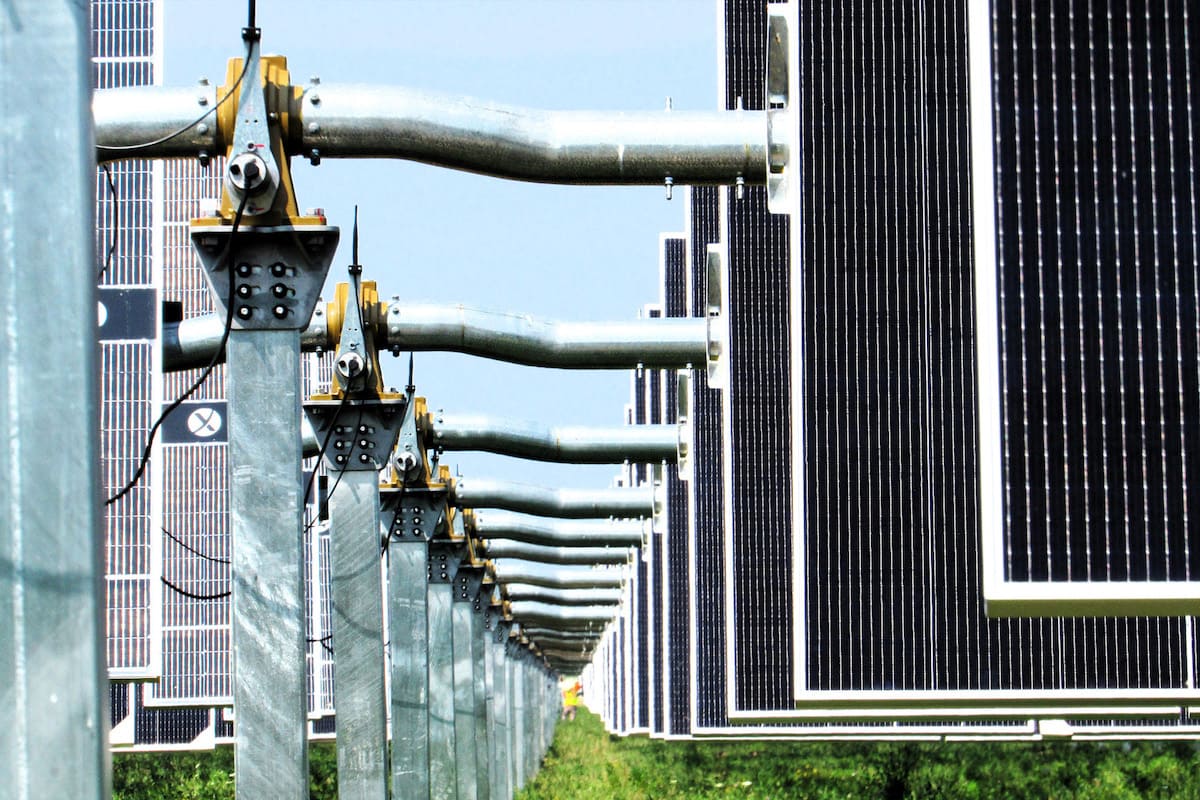
Record year for solar trackers as India and Saudi Arabia lead global surge
According to analysts at Wood Mackenzie, 2024 marked the strongest year ever for the global solar tracker market, with shipments rising 20% compared to 2023.
The latest edition of the “Global solar PV tracker market share 2024” report reveals that while growth may slightly decelerate, the market has already set a record. Over the course of 2024, solar trackers supporting a total of 111 GW of capacity were shipped, up from a 28% jump already recorded in 2023 over the previous year.
Prepared annually by research firm Wood Mackenzie, the report provides a detailed breakdown of the global market for photovoltaic trackers, analyzing producer market shares and regional demand. These shares are based on tracker shipments, measured in DC capacity installed within each solar project.
Market structure and leadership in 2024
The overall market landscape in 2024 remained consistent with the previous year in terms of leading players, with top manufacturers solidifying their positions and only a few expanding their footprint.
For the tenth consecutive year, U.S.-based Nextracker dominated the global solar tracker market, securing the top spot with a 26% market share. The company achieved a 39% year-over-year growth, distributed evenly across global regions. This success was partially driven by the opening of a new factory in Nevada, one of more than 20 facilities launched or expanded in the U.S. since 2021. However, the main driver was foreign demand, particularly from India, where Nextracker’s installed portfolio now exceeds 10 GW.
China’s Arctech Solar climbed to second place with approximately 16% market share, surpassing former runner-up Array Technologies, along with GameChange Solar and PV Hardware. Arctech’s rapid commercial expansion included the launch of manufacturing bases in Saudi Arabia and Brazil, the creation of an R&D center in the Middle East, and the relocation of its European headquarters to Madrid. These moves helped Arctech gain strong positions in both the Saudi and Indian solar tracker markets—now key engines of global growth.
India and Saudi Arabia lead demand for solar trackers
India and Saudi Arabia alone accounted for 28 GW of tracker demand in 2024, surpassing all of Europe. “The year was defined by the rapid growth of Indian and Saudi tracker markets, reshaping a podium that had been dominated by the U.S. since 2023,” explained Joe Shangraw, associate research analyst at Wood Mackenzie.
Arctech’s expansion isn’t an isolated case. Several other Chinese suppliers also expanded overseas in 2024 to counter a shrinking domestic market.
Meanwhile, the U.S. solar tracker market posted its first decline in eight years, dropping by 9%. Europe remained one of the most competitive and diverse tracker markets, with over nine suppliers each holding between 5% and 15% market share.
Spain recorded its highest-ever demand in 2024, driven by Solar Steel and Nextracker. “However,” analysts noted, “much of Europe’s regional growth stemmed from emerging markets in Southern and Central Europe, where companies like Axial Structural Solutions, Zimmermann, and TrinaTracker experienced renewed success in 2024.”
read also Market Solar Trackers, in 2023 delivered 92 GW
New technologies shaping solar tracking
Several technology breakthroughs stood out in 2024, particularly the German DeepTrack research project led by Fraunhofer ISE and Zimmermann PV-Tracker. The initiative aims to boost the efficiency of solar trackers used in bifacial module and agrivoltaic installations by applying AI-based control algorithms to maximize output.
Solar trackers, whether single-axis or dual-axis, already deliver a 20–30% yield boost compared to fixed-tilt systems. DeepTrack seeks to go further by optimizing panel orientation to capture diffuse light and adapting light modulation for crops in elevated agrivoltaic systems.
The project uses a digital twin that combines real-world data, PV modeling, weather forecasts, and deep learning to determine optimal module positions. The goal is to strike a balance between peak energy production and agricultural needs, marking a new chapter in energy-agriculture integration.
How to improve solar tracker systems
A new study from the IEA PVPS Task 13 working group, with contributions from Italian researcher Giosuè Maugeri (RSE), offers guidelines for enhancing tracker performance. Based on literature reviews, industry standards, and interviews with 16 leading firms and operators managing over 13 GW of capacity, the report identifies several priority areas:
- Tracking algorithms: Greater transparency and on-site benchmarking are needed to validate tracker performance.
- Albedo optimization: More research is required on low-cost materials and optimal placement strategies for albedo enhancers.
- Extreme weather response: Trackers must be better standardized to handle rare but high-impact weather events.
- Capacity testing: Despite progress, challenges remain due to high DC/AC ratios and uncertainties in shading forecasts.
- Performance modeling: Current prediction models show significant variability—up to 100% for rear-side irradiance. More validated data is needed to improve consistency.
- System reliability: Literature on long-term durability and reliability of single-axis trackers remains scarce.
Read more in the full Wood Mackenzie report.